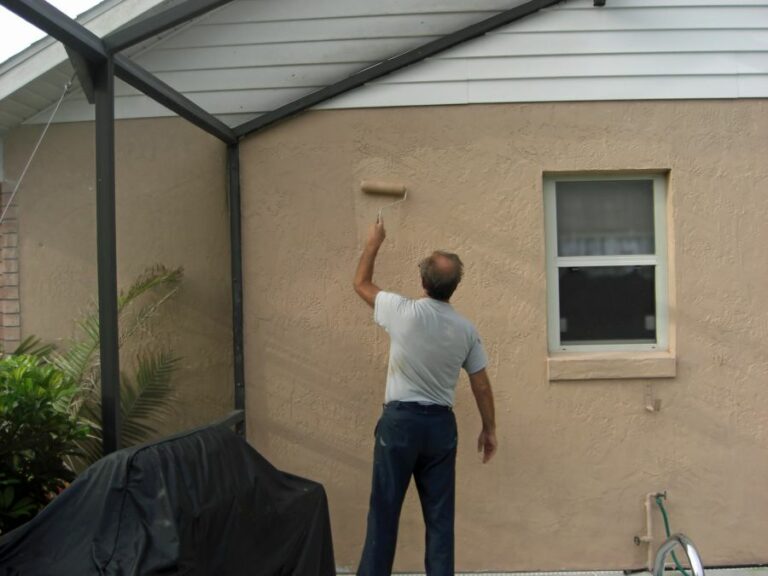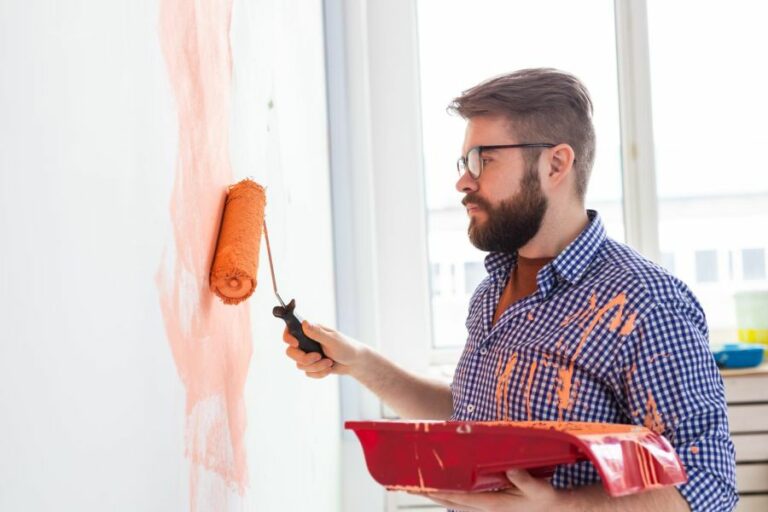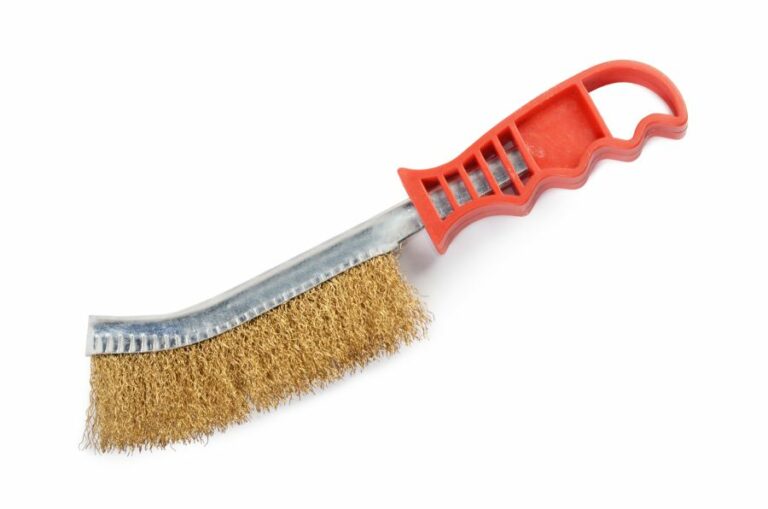Perfect Paint Finish: Sand And Scrape. What Pros Say
If you’re hunting for that perfect paint finish, then look no further! Our expertise in the art of sanding and scraping will make your painting endeavors a breeze. Get ready to transform those walls into a smooth canvas for your dream color palette.
Perfect paint finish: sand & scrape:
A perfect paint finish is achieved through careful attention to detail and the right techniques, such as sanding and scraping. Proper surface preparation ensures a smooth and clean surface, allowing the paint to adhere uniformly and create a durable, visually pleasing finish.

Unleash the full potential of a paint job by mastering the art of sanding and scraping! Discover expert techniques, tips, and secrets to achieve that flawless finish you’ve always wanted. Read on to transform your painting project into a masterpiece.
Contents
- 1 Flawless Paint Outcome: Sanding & Scraping Techniques
- 2 Achieving a Smooth Finish by Sanding Paint
- 3 Sandpaper Grit Recommendations for Paint Finishes
- 4 Attaining an Ultra-Smooth Paint Finish: Tips & Tricks
- 5 Ideal Sanding Smoothness for Pre-Painting Surfaces
Flawless Paint Outcome: Sanding & Scraping Techniques
A perfect paint finish is a result of careful attention to detail and the right techniques. Two essential steps in preparing surfaces for a seamless paint job are sanding and scraping.
• Importance of Surface Preparation
Before we dive into the techniques of sanding and scraping, it’s crucial to understand the value of properly preparing walls for painting. When surfaces are uneven, or there’s loose debris such as dry paint or dust, the paint fails to adhere uniformly.
As a result, the finish appears blotchy, and the paint may peel or chip over time. Prepping surfaces with sanding and scraping ensures a smooth and clean surface for the paint to adhere neatly, creating a durable and visually pleasing finish.
• Sanding Technique: Achieving a Smooth Surface
Sanding is a vital step in preparing walls for a perfect paint finish. Here are some expert recommendations on how to do it right.
– Choose the Right Grit
Selecting the correct grit sandpaper is crucial for the
Achieving a Smooth Finish by Sanding Paint
Achieving a smooth finish on painted surfaces can be a challenge, especially when working with various paint types and substrates. One method to help create a professional-looking, smooth finish is sanding the paint.
• When to Sand Paint for a Smooth Finish
Sanding paint can be useful in several scenarios. Here are some instances when sanding paint may be appropriate:
– Prepping a Surface for Painting
Sanding a surface before applying paint aids in adhesion, promoting a smoother finish. This process is especially important when working with glossy surfaces or a surface with several layers of paint.
– Between Paint Coats
Sanding between paint coats helps eliminate imperfections, such as brush strokes or paint drips, and creates a smoother surface for the next coat of paint. This ensures a more even and professional-looking final result.
– Fixing Imperfections
Imperfections, such as debris, dust, or uneven paint application in a dried paint surface, can be addressed by sanding. This helps smooth out any rough spots and creates a more uniform finish.
• Tools and Materials Needed for Sanding Paint
Before starting the sanding process, you’ll need some essential tools and materials:
- Sandpaper: Choose the appropriate grit for your project. Lower grit numbers (e.g., 80 or 120) are coarser and remove more material, while higher grit numbers (e.g., 220 or 320) provide a finer, smoother finish. The appropriate grit will depend on the specific paint type and desired finish.
- Sanding block or sanding sponge: These tools provide even pressure while sanding, resulting in a smoother finish. A sanding block can be used with a sandpaper sheet, while a sanding sponge has an abrasive surface built in.
- Tack cloth: This sticky cloth is used for removing dust and particles after sanding to create a clean surface for painting.
- Respirator or dust mask: Wearing proper protection while sanding is crucial to avoid inhaling dust particles.
- Protective eyewear: Use safety glasses to protect your eyes from dust and debris.
• Tips for Sanding Paint to Get a Smooth Finish
To achieve a smooth finish when sanding paint, follow these recommendations:
– Test a Small Area First
Before sanding the entire painted surface, test a small, inconspicuous area to ensure the correct sandpaper grit is being used and that the process will produce the desired results.
– Apply Even Pressure
When sanding, apply consistent, even pressure to avoid creating divots or uneven areas in the paint surface.
– Sand in a Circular Motion
Sanding in a circular motion will help avoid creating noticeable scratches in the paint. This technique is especially important with coarser grits, as it can help blend the scratch marks more effectively.
– Gradually Progress to Finer Grits
Start with coarse grit sandpaper and work your way towards fine grits as you progress towards the desired smooth finish. This ensures optimal removal of surface material and achieving a professional-looking result.
– Clean the Surface Between Sanding and Painting
Using a tack cloth, clean the surface after sanding to remove any dust or particles. This ensures a clean surface for painting and helps prevent imperfections in the final result.
– Use Proper Safety Precautions
Aside from wearing a respirator or dust mask and protective eyewear while sanding, it’s also essential to work in a well-ventilated space. This helps protect against inhaling potentially harmful dust particles, as well as promoting a safer working environment.
• Sanding Paint for a Smooth Finish: A Proven Technique
Sanding paint can be an effective method for creating a smooth, professional-looking finish on painted surfaces. By understanding when to sand, using the appropriate tools and materials, and following proper sanding techniques, you can achieve a top-quality paint job that stands out.
Question | Answer |
|---|---|
Can you sand paint to get a smooth finish? | Yes, sanding paint can help achieve a smooth finish. For best results, allow the paint to dry completely, then use fine-grit sandpaper to lightly sand the surface. This will help remove any imperfections and create an even, smooth finish for the next coat of paint or clear coat. |
Sandpaper Grit Recommendations for Paint Finishes
Before diving into the various grit sandpapers and their ideal uses for achieving a smooth paint finish, it’s essential to understand sandpaper’s role in the painting process.
Sandpaper is a type of coated abrasive that consists of actual grit, such as aluminum oxide, silicon carbide or ceramic, adhered onto a paper, cloth, or film backing.
It is primarily used to smoothen surfaces, remove rough patches, and eliminate imperfections, preparing the surface for the paint job.
• Importance of Choosing the Right Grit Sandpaper
Choosing the right grit sandpaper is crucial in obtaining the perfect paint finish. The grit number determines the coarseness or fineness of the sandpaper.
The higher the grit number, the finer the sandpaper, and vice versa. Using inappropriate grit can lead to scratches or uneven surfaces, eventually causing the paint to peel off or appear dull.
• Cases for Coarser Grit Sandpapers (40 80 Grit)
– Removing Old Paint
When stripping off old paint, it’s advisable to use lower-grit sandpaper in the range of 40 to 60 grit. Coarser sandpapers effectively work through multiple layers and remove old paint from a surface. This is typically the first step in the painting process when dealing with previously painted surfaces.
– Smoothing Rough Surfaces
While preparing a rough surface for painting, using 60 or 80-grit sandpaper helps smooth the surface by removing deep scratches and stubborn marks. After this initial step, you can move on to a finer grit to achieve an even smoother finish.
• Time for Medium Grit Sandpapers (100 150 Grit)
– Evening Out Surfaces
Once the surface has been stripped of old paint and any rough patches have been addressed, it’s time to switch to a medium-grit sandpaper. A 100 to 120-grit sandpaper is ideal for this phase, as it will remove any remaining imperfections and create a smoother surface, ready for painting.
– Preparing Bare Wood
When working with bare wood, opting for 150-grit sandpaper would be wise to ensure the surface is smoothed out and the wood fibers are raised. This step is crucial in preparing the wood for a primer coat.
• Finishing Touches with Finer Grit Sandpapers (180 to 320 Grit)
– Final Sanding Before Painting
Before painting, you’ll want to switch to finer sandpaper, typically 180 to 220 grit, to perform a final sanding of the surface. This step will remove any last-minute imperfections and create a smooth base for the paint to adhere to correctly.
– Sanding Between Paint Coats
After applying the primer and paint coats, the final touches come into play. Fine-grit sandpapers, in the range of 220 to 320 grit, can be used to sand in between paint coatings.
This step ensures that any rough patches, orange peel, or dust particles are eliminated, leaving a smooth and even finish on the final coat.
• Extra Fine Grit Sandpapers (400 to 800 Grit)
– Wet Sanding for a Flawless Finish
For an impeccably smooth paint finish, wet sanding can be employed. Wet sanding uses extra fine grit sandpapers (400 800 grit), often in combination with water or rubbing alcohol, to provide a flawless surface without any scratches.
This step is typically followed by applying a clear coat for added protection and an impeccable sheen.
In conclusion, selecting the appropriate grit sandpaper is crucial in obtaining a perfect paint finish. Knowing when to use coarser, medium, fine, or extra fine grit sandpapers will significantly improve your painting results.
From stripping old paint and smoothing surfaces to final touches and wet sanding, each step has a specific grit sandpaper to ensure the highest possible paint finish.
For further guidance, the U.S. Department of Agriculture Forest Service provides valuable information on the types of grit sandpapers and their uses. Their website is a valuable resource for those looking to improve their knowledge and skills in painting and finishing.
Attaining an Ultra-Smooth Paint Finish: Tips & Tricks
A super smooth paint finish is the ultimate goal for many painters, whether they are professionals or DIY enthusiasts. Achieving this flawless result requires meticulous preparation, the right tools, and proper techniques.
• Selecting the Right Paint
Before we dive into the process of painting, it’s crucial to choose the best-suited paint for your project. High-quality paints with a self-leveling formula are ideal, as they tend to produce smoother results.
Additionally, paints with a sheen, such as semi-gloss or glossy, showcase a smooth finish better than matte or flat surfaces.
– Water-based vs. Oil-based
There is a long-standing debate about using water-based (latex) or oil-based (alkyd) paints to achieve a smooth finish.
Water-based paints are easy to clean up and have low VOCs (volatile organic compounds). However, oil-based paints typically provide a harder, smoother finish. Many professionals lean towards oil-based paints for achieving a super smooth finish on surfaces like trim, doors, or furniture.
However, advances in water-based paint technology have significantly improved their performance, so it’s best to do your research and choose a product with excellent reviews and proven results.
• Prepping the Surface
To achieve a super smooth paint finish, surface preparation is critical. A well-prepped surface ensures the paint will adhere properly and result in an even, smooth finish.
– Cleaning
Begin by removing dirt, grease, and loose paint from the surface. For mild cleaning, use a mild detergent and warm water, then rinse thoroughly with clean water.
For more stubborn stains and residues, a trisodium phosphate (TSP) cleaner can be used, but always follow the manufacturer’s instructions and safety guidelines.
– Repairing Imperfections
Inspect the surface for any imperfections, such as holes, dents, or cracks. Use a suitable filler or patching compound to repair these imperfections, then sand the area smooth once it’s dry.
For large areas, a sanding block or electric sander can be used, but be cautious not to cause more damage by over-sanding.
– Priming
A high-quality primer is essential for a super smooth paint finish. Primer ensures proper paint adhesion, and it helps to create a uniform surface by sealing imperfections and providing a base coat for the paint.
Select a primer that is compatible with your chosen paint, and be sure to read the product’s instructions for specific application techniques and drying times.
• Proper Painting Tools
Investing in high-quality painting tools is a crucial step in achieving a super smooth finish, as low-quality tools can cause problems like streaks, brush marks, or uneven coverage.
– Brushes
Choose a paintbrush with synthetic bristles for water-based paints and natural bristles for oil-based paints. In general, a high-quality angled brush between 2 to 2.5 inches wide is best for cutting in edges and painting trim or smaller surfaces.
– Rollers
For larger surfaces, a high-quality roller with the correct nap length is essential. Short nap rollers (1/4 to 3/8-inch) are suitable for smooth surfaces, while longer nap rollers (1/2 to 3/4-inch) are best for rough or textured surfaces.
• Painting Techniques
With the surface prepared and the right tools in hand, it’s time to start painting. Following proper techniques will ensure a super smooth finish.
– Thinning the Paint
Check the paint’s consistency before application; it should be neither too thick nor too thin. If needed, thin the paint according to the manufacturer’s recommendations. Properly thinned paint will flow smoothly and can help prevent brush marks or roller stippling.
– Loading the Brush or Roller
When loading your brush or roller, don’t overload it with paint. Instead, dip the brush about halfway into the paint and tap off any excess to avoid drips. For rollers, use a roller tray to evenly coat the roller, then roll off any excess on the tray’s ridged area.
– Application
When applying the paint, use long, smooth strokes and maintain a wet edge to prevent brush marks. For best results, apply multiple thin coats rather than one thick coat. Allow each coat to dry according to the manufacturer’s recommendations before applying the next one.
For smooth finishes on large surfaces, consider using a paint sprayer. This method can provide an even application without brush or roller marks. However, it requires additional equipment and practice to achieve the best results.
• Final Thoughts
Achieving a super smooth paint finish takes time, patience, and attention to detail. High-quality paint, proper surface preparation, and the right tools and techniques are key factors in attaining this desired result.
By following the steps outlined in this article, you can create a professional-looking, ultra-smooth finish for your next painting project.
Step | Description |
|---|---|
1. Prepare the surface | Clean the surface with soap and water, remove any dirt, loose paint, or imperfections. |
2. Sand the surface | Sand the surface with fine-grit sandpaper (220-grit or higher), ensuring it is smooth and even. |
3. Prime the surface | Apply a high-quality primer to the entire surface, allowing it to dry completely. |
4. Sand the primer | Lightly sand the primed surface with fine-grit sandpaper, removing any imperfections. |
5. Apply the paint | Use a foam roller or high-quality brush to apply the paint, using long, even strokes. |
6. Wait for the paint to dry | Allow the paint to dry completely before assessing its finish and deciding whether to apply another coat. |
7. Sand between coats | If additional coats are needed, lightly sand the surface between coats to ensure a smooth finish. |
8. Apply a clear finish (optional) | For extra protection and durability, consider applying a clear coat finish once the paint has dried. |
Ideal Sanding Smoothness for Pre-Painting Surfaces
When it comes to achieving a professional-looking paint job, proper sanding is an essential step many people overlook. The process of sanding smoothens the surface, allowing the paint to adhere better and resulting in a more even and polished finish.
• Factors Affecting Sanding Smoothness
There are several factors that can affect how smooth you need to sand before painting, including the type of material being painted, the type of paint being used, and the desired finish. Let’s examine each of these factors in more detail.
– Type of Material
Different materials may require different levels of sanding. For instance, wood is typically more porous and uneven than metal, and it may require a bit more attention and effort when sanding.
On the other hand, previously painted surfaces may already be quite smooth, and thus need less extensive preparation. Pay close attention to the condition of the material and adjust your sanding techniques accordingly.
– Type of Paint
The type of paint you plan to use can also have an impact on how smooth to sand before painting. High-gloss paints will highlight any imperfections in the surface, so a smooth and flawless surface is crucial.
On the other hand, matte and flat paints can be more forgiving, so a slightly less perfect surface could suffice.
– Desired Finish
Your personal preferences also play a role in determining how smooth the surface should be before painting. If you want a sleek, modern look, it’s essential to make the surface as smooth as possible to avoid any bumps or imperfections.
However, if you are going for a more rustic or textured finish, sanding to perfection might not be as critical.
• Sandpaper Grit Levels: A Key Consideration
Choosing the right sandpaper grit level is essential for achieving the desired smoothness before painting. Sandpaper grit levels range from coarse (40-60 grit) to ultra-fine (1,000-2,000 grit).
The lower the grit number, the coarser the sandpaper, and the faster it removes material. As you progressively move to higher grits, the sandpaper becomes finer and the surface smoother.
For most painting projects, beginning with medium-coarse sandpaper (80-120 grit) and working your way up to fine sandpaper (180-220 grit) is recommended.
If you desire an ultra-smooth finish, especially when using high-gloss paint, you may even consider going up to 400 grit or higher.
• Sanding Techniques for a Smooth Surface
Proper sanding techniques are crucial for achieving the smoothest possible surface before painting.
- Sand in the direction of the grain: For wood surfaces, always sand with the grain, not against it. This will create a smoother finish and reduce the risk of scratching the wood.
- Use a sanding block: A sanding block helps to distribute pressure evenly and maintain a flat surface, resulting in a smoother finish. A foam sanding block or pad can also be used for curved surfaces.
- Always clean the surface: After each round of sanding, use a tack cloth, vacuum, or damp cloth to remove any sanding residue. This will prevent the dust from settling into the new paint and ensure a better overall finish.
- Progressively use finer grits: Start with a medium-coarse grit and gradually move to finer grits, ensuring the entire surface is smooth and free of any visible scratches or imperfections.
• Final Thoughts and Recommendations
In conclusion, the level of smoothness required before painting depends on a variety of factors, including the type of material, type of paint, and desired finish.
For best results, always use the appropriate grit level and sanding techniques, and clean the surface thoroughly before applying paint.
Based on my experience, I recommend beginning with 80-120 grit sandpaper and progressing to a fine 180-220 grit sandpaper for most projects. If an ultra-smooth finish is desired, especially with high-gloss paint, consider using sandpaper with a grit level of 400 or higher.







